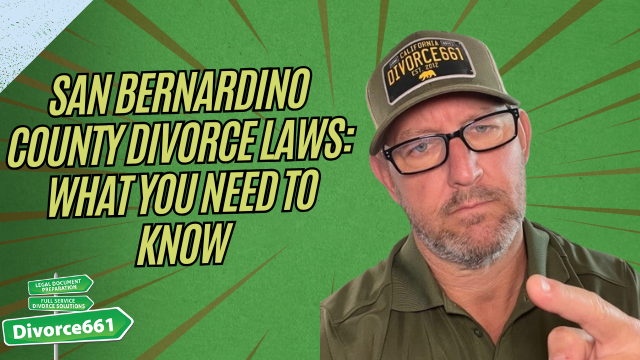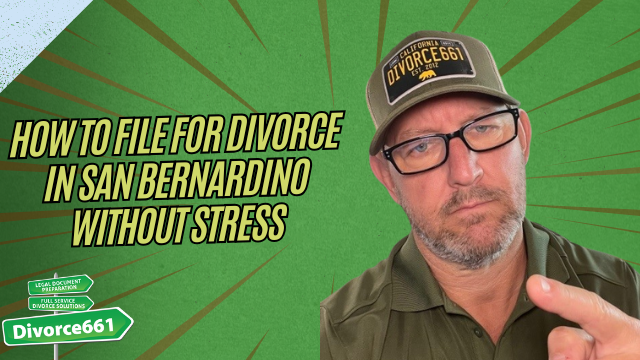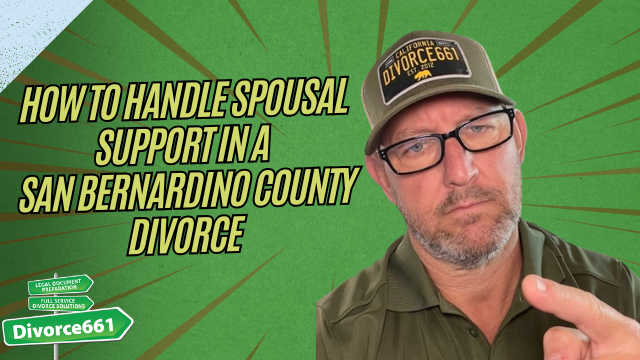San Bernardino County Divorce Laws: What You Need to Know
Introduction
Hi, I’m Tim Blankenship from Divorce661. In my video “San Bernardino County Divorce Laws: What You Need to Know” I walk through the essential laws and local procedures anyone filing for divorce in San Bernardino County should understand. This article expands on those points so you can avoid common mistakes, unnecessary delays, and rejected judgments.
What to know up front: the big picture
California is a no-fault divorce state. That means you don’t need to prove wrongdoing to get divorced — you simply state that there are irreconcilable differences. While San Bernardino County follows state law, each court has local rules for filing, paperwork, and hearings. Knowing both state law and local procedures is the quickest way to a clean, approved judgment.
San Bernardino follows state law — but check local rules
State statutes govern the substance of divorce (property division, support, custody), but the San Bernardino courts may have specific formatting, filing, or procedural requirements. These local rules can affect:
- How paperwork must be filed (in person, electronically, or by mail)
- Document formatting and required attachments
- Scheduling hearings and how the court handles unopposed judgments
Always verify local court requirements before filing to prevent rejections or delays.
The mandatory six-month waiting period
The divorce process cannot be finalized immediately. A mandatory waiting period applies — the clock starts once your spouse has been properly served with the divorce paperwork. Even if both parties agree and all paperwork is completed quickly, the court will not enter a final judgment until that minimum time has passed.
Plan timelines and expectations around this waiting period. It’s the most common source of surprise for people who expect an instant finalization.
Financial disclosures are always required
Regardless of how amicable your split is, California requires exchange of financial disclosures. These are not optional and the court will expect accurate, complete documentation before approving a final judgment. Typical disclosures include:
- Income information (pay stubs, tax returns)
- Assets and property (bank accounts, real estate, retirement accounts)
- Debts and liabilities (credit cards, mortgages, loans)
- Monthly expenses and support information
Disclosures generally include both preliminary exchange and final disclosures. If documents are incomplete or inaccurate, the court can reject your judgment until everything is corrected.
Client story: why disclosures matter
“We recently worked with a client in San Bernardino who thought they could skip disclosures since they were in agreement with their spouse. Their judgment was rejected.”
That case highlights how costly assumptions can be. The judgment was rejected because required financial disclosures were missing. We corrected the forms, resubmitted accurate disclosures, and the court approved the judgment quickly. The takeaways:
- Agreement between spouses does not waive disclosure requirements.
- Accurate, complete forms prevent rejections and delays.
- Expert review before filing catches common errors.
Practical checklist before you file in San Bernardino
- Confirm local court rules for San Bernardino County (formatting, e-filing options, and submission requirements).
- Prepare and organize financial documents: income, taxes, assets, debts, monthly expenses.
- Complete required disclosure forms fully and truthfully; plan for both preliminary and final disclosures.
- Arrange proper service of process — the six-month waiting period begins when service is complete.
- Keep copies of everything you file and receive; track dates carefully.
How I can help — the Divorce661 approach
At Divorce661 we specialize in flat-fee, full-service divorce for amicable couples across California with particular experience in San Bernardino County procedures. We handle:
- Preparing and filing paperwork correctly
- Ensuring proper service of documents
- Completing and reviewing financial disclosures
- Submitting the final judgment and tracking approval
Our goal is to get your divorce filed right the first time so you avoid rejections and unnecessary delays. If you want help navigating San Bernardino’s rules and requirements, visit Divorce661.com to schedule a free consultation.
Conclusion — move forward with confidence
Filing for divorce in San Bernardino County doesn’t need to be stressful, but it does require attention to both California law and local court procedures. Remember: California is no-fault, the six-month waiting period starts after proper service, and financial disclosures are mandatory regardless of how amicable your case is. Getting those pieces right up front saves you time, money, and frustration.
If you’d like help ensuring your paperwork, disclosures, and filing are handled correctly, I’m here to guide you through every step. Visit Divorce661.com to learn more and get a free consultation.










